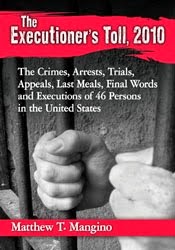More murders across America are going unsolved, exacerbating the grief of families already reeling and worsening the largely cracked trust between police and the public, especially communities of color most affected by gun violence, reported NPR.
"I haven't had any word," says Mark
Legaspi about the murder of his cousin, friend and business partner Artgel
Anabo Jr., 39, who was known as Jun. He was shot just outside their
popular Filipino fast-food restaurant Lucky Three Seven in East Oakland,
Calif., May 18, 2022. "It's still emotional every day coming in here, you
know?" Legaspi says nodding toward the street where Jun was murdered.
Oakland detectives released
security camera footage and the license plate number of the suspected
get-away car. Anabo's family believes the suspect is a man who sold Anabo a
truck that turned out to be stolen. Still, there's been no break in the case
and no word.
"It's definitely frustrating. Justice hasn't
been served," Legaspi says. "I mean it's almost a year. I would like
to know something. I don't get no answers," he says noting that he and his
family haven't heard from Oakland homicide detectives for months. "You
know, if there's anything, you know, even if they didn't do anything, that'd be
nice to know. Instead of us hoping."
The U.S. among the worst at solving murders in the
industrialized world
Legaspi's frustration and pain are shared by
hundreds of families of murder victims in Oakland – and across the country –
whose cases remain unsolved.
While the rate at which murders are solved or "cleared"
has been declining for decades, it has now dropped to slightly below
50% in 2020 - a new historic low. And several big cities, including
Chicago, have seen the number of murder cases resulting in at least one arrest
dip into the low to mid-30% range.
"We saw a sharp drop in the national clearance
rate in 2020," says Prof. Philip Cook, a public policy researcher and
professor emeritus at Duke University and the University of Chicago Urban
Labs who has been studying clearance rates for decades. "It reached close
to 50% at that time nationwide, which was the
lowest ever recorded by the FBI. And it hasn't come up that much since
then."
That makes the U.S. among the worst at solving
murders in the industrialized world. Germany, for example, consistently
clears well over 90% of its murders.
While reasons behind the drop are multi-faceted,
Cook and other experts warn that more people getting away with murder in the
the U.S. is driving a kind of doom loop of mutual mistrust: low murder
clearance rates impede future investigations which in turn potentially drive up
killings in some communities where a lack of arrests undermines deterrence and
sends a message that the police will not or cannot protect them.
"Communities that are especially impacted by
gun violence believe that the police are ineffective or indifferent, and as a
result, they're less willing to cooperate and provide information the police
need to have successful investigations," says Cook, who has several
research articles on the topic coming out.
"It is undermining whatever trust there is in
the police. And it's a vicious circle," Cook says.
"I certainly don't believe in anyone getting
away with murder"
Oakland,
Calif., is a prime example of that vicious circle. The city's per
capita homicide rate remains abnormally high and its murder solve rate is among
the lowest in the nation, hitting just 36% last year. If you take out the
handful of older, "cold" cases that were solved during 2022, the
clearance rate in Oakland just 27%, an analysis
by the S.F. Chronicle shows.
"Well, I certainly don't believe in anyone
getting away with murder. These cases are never closed," says Drennon
Lindsey, an Oakland deputy chief who formerly led the department's homicide
division. "We never give up, you know. And I also think we can only get
better."
Lindsey says the veterans among her 16 detectives
are often handing two dozen or more cases at a time, far above the
federal recommendation that detectives carry an average of only four
to six new homicide cases per year.
In addition, she says, an antiquated case management
data system, which the city is working to replace, is another reason behind the
painfully low clearance rate. But the biggest one, she says, is too many people
are scared to talk with and help the OPD.
"People don't want to cooperate, people don't
want to come to court and testify. And they're afraid of retaliation, of being
labeled in their communities as a "snitch." And we're often left
trying to plea and beg for the community to come forward with information to
hold this person accountable for committing murder," she says.
But that mistrust is also bred by the department's
chronic dysfunction.
The department remains under federal oversight and
has for two decades. In that time the troubled agency has gone
through a dozen leaders. And recently veteran Oakland
homicide detective Phong Tran was arrested and arraigned after the
Alameda County district attorney's office accused him of paying a witness
thousands of dollars to lie in a murder case that resulted in two men getting
life sentences. Detective Tran faces felony charges of perjury and bribery.
Those two murder convictions have been tossed out.
In a statement to NPR, Tran's attorney Andrew M.
Ganz called the charges "baseless" and lashed out a District Attorney
Pamela Price for treating "murderers like heroes."
Price's office in a statement says it is now
reviewing at least 125 murders Tran investigated "to see if we have
wrongfully convicted anyone else."
"Lying and manipulating a witness are serious
violations of the public trust and a threat to the integrity of the judicial
system," Price says. "When the integrity of a conviction is at issue
in one case, it raises questions in every other case that the detective has
investigated."
The "exceptional means" clause and chronic
police staffing affect murder clearance rates
The FBI defines a murder "cleared" if a
suspect has been identified and arrested. But a murder can also be declared
cleared through what's known as an "exceptional means." For example,
if a suspect is dead, can't be extradited or prosecutors refuse to press
charges.
So, criminologists note, even some cities now
touting modestly improved murder clearance rates, such as Chicago, are really
just artificially boosting their clearance numbers through that
"exceptional means" clause.
The arrest rate per murder if is often a better
indicator of how police departments are actually doing at holding killers
accountable. Prof. Cook's research, for example, shows that from 2016 to 2020
the percentage of murders
in Chicago with any type of weapon resulting in at least one arrest
was just 33%. And in Durham, North Carolina, between 2017 and 2021 just 41% of
gun homicide cases resulted in at least one arrest.
Other reasons for the further decline in murder
clearance rates, experts say, include chronic police staffing and recruiting
problems, and the fact that more murders are committed with firearms, which can
result in fewer witnesses and less physical evidence. In addition, judges,
prosecutors and juries have higher evidence and procedure standards than in the
1960s when 90-plus% of homicides were listed as solved.
Researchers say key ways cities can to try to stop
the downward spiral is simply investing more in homicide investigations:
improving crime labs, training, DNA testing, computer modeling systems.
White crosses with the names and ages of the dead
grows with every killing
In front yard of Oakland's Saint Columba Catholic
Church along bustling San Pablo Ave, a garden of simple, wooden, white crosses
with the names and ages of the dead grows with every killing.
Every Jan. 1 "that garden is a garden for about
a minute," says Fr. Aidan McAleenan, St Columba's pastor looking at the
roughly two dozen crosses already posted in the yard. "And then is just
gets grows and grows" all year. "My biggest concern, and I prayed
about this, there are about 100 people walking around Oakland now who will not
be walking around Oakland at the end of the year," McAleenan says.
Parishioner Rich Laufenberg makes the wooden crosses
and dutifully "plants" them every week or two. "I do it as some
kind of service work, I hope, and to let people know that we have a major
violence problem here in Oakland," he says. Regularly, Laufenberg says
when placing the crosses he'll find family or friends of a victim praying or
just gazing in stunned silence at the lives cut short
"They'll stop and look and strike up a
conversation and they mention not infrequently that the relative whose cross
they're looking at, that case, hasn't been solved yet."
At Oakland's Lucky Three Seven Filipino restaurant,
owner Mark Legaspi says he doesn't blame Oakland detectives, per se, for not
solving his cousin's murder. They're overworked and overwhelmed, he says. But
he wants answer. And so does his murdered cousin's son, Kiah, now 12 who was
super tight with his dad. Kiah was right next to his dad when the gunman
attacked.
"He saw everything. I'm just glad he ran the
other way instead of following his dad. You know, because he could have got
caught in the line of fire," Legaspi says. "Obviously, as a kid,
seeing that, your superhero dad, you know, that will always have problem with
you know, like inside," he says.
Anabo's
son is doing OK, given the circumstances, he says. He's making the
Honor Roll and trying to stay positive. "Just got to keep that love with
him every day, you know."
The family plans to honor Anabo with a gathering at
the restaurant on the upcoming May 18 anniversary of his murder.
But they'd rather celebrate a break in his case.
To read more CLICK HERE













